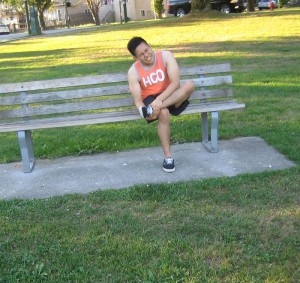When it comes to chilblains, it is a form of vasculitis that happens when a predisposed person is exposed to cold. Exposure to cold can result to damage to the small blood vessels in the skin and cause redness, blisters, inflammation and itchiness which usually affect the toes, fingers, nose and ears. Women, children and the elderly are susceptible to develop this condition.
[youtube url=”https://www.youtube.com/watch?v=rvywWKQjEHQ”]Symptoms
- Burning and itchy sensation usually in the extremities such as the feet, hands, nose or ears and it becomes worse when walking in warm areas.
- The affected skin becomes reddened and inflamed and oftentimes there are sores and blisters
Causes

The blood vessels become narrow when exposed to cold and when warmth returns, the blood vessels expand again. This change can cause the blood to leak out of the vessels and result to inflammation and chilblain.
Who are at risk for chilblains?
- People suffering from lupus
- Family members who have/had chilblains
- Circulation problems
- Living in draughty or cold house or those that are not properly insulated
- Tobacco smokers
- Thin individuals
Treatment
- Elevate the area to help increase the circulation of blood, lessen the inflammation and pain. Place the hands and legs on a couple of pillows to keep them elevated. If the nose and ears are affected, sit in a high-backed chair and bend the neck backwards. Another way is to wrap the body using a blanket and provide the individual with hot beverages or herbal tea to assist the body in adapting to the warm temperature.
- When the body has already adapted to the warm temperature, massage the area using warm olive or coconut to promote proper blood circulation.
- Massage the hands and legs in circular motions at least 2 times every day particularly in the morning and at night before going to sleep. This helps with the proper circulation of blood and lessens the risk of developing chilblains. Use palm oil in massaging the legs and arms. Essential oils such as rosemary or lavender can also be added to the massage.
- Cut onion into thick slices and then rub it over the affected area and leave it on the skin for at least 15 minutes. Wipe it off using a warm washcloth. Perform this remedy at least 2-3 times every day for 1-2 weeks. Onions possess anti-inflammatory, antibiotic and antiseptic properties that lessen the swelling, inflammation and pain. Another option is to grind 1 or 2 onions into a paste and apply it over the affected area and leave it on for at least 15-20 minutes. Rinse it off using cold water and repeat this procedure several times every day for 1-2 weeks. Avoid applying onion paste when there is cut or wound in the skin.
- Perform regular exercises every day to help improve the circulation of blood and make sure to warm up before performing any exercises.
